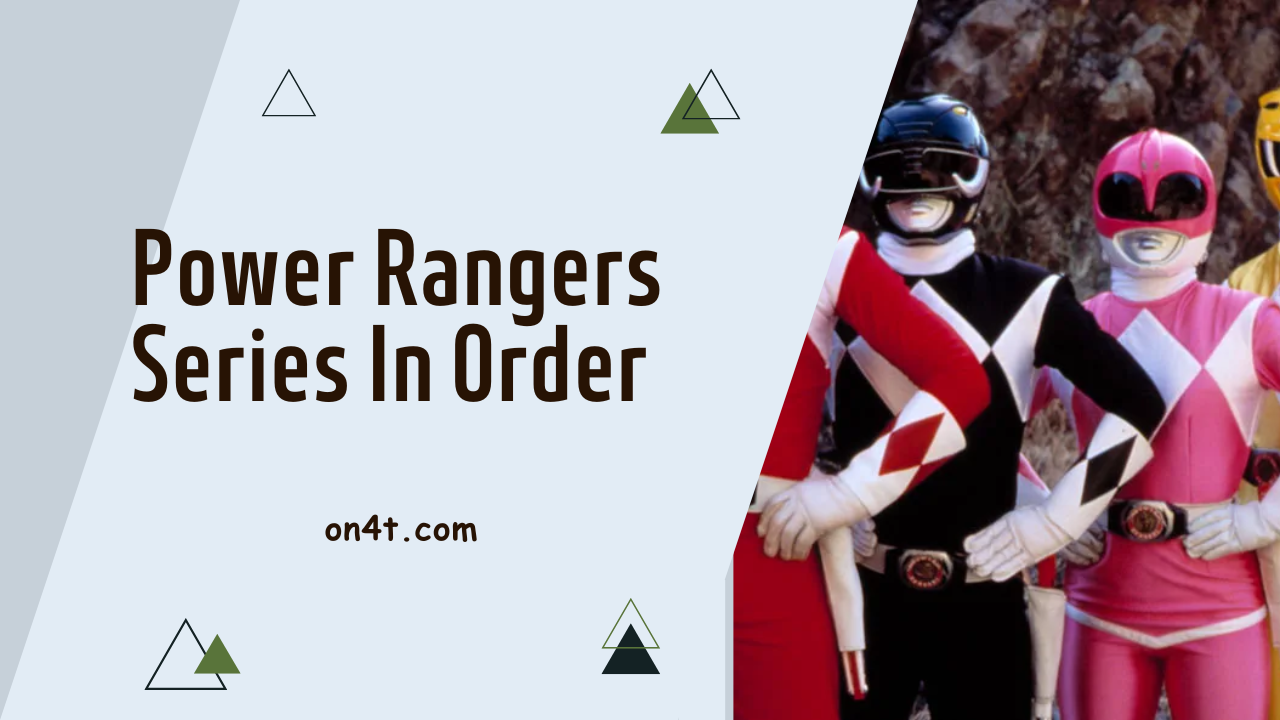The Power Rangers series, known for its action-packed adventures and colorful superhero teams, has been a beloved part of pop culture for decades. From its origins in the early 1990s to the present day, the franchise has captivated audiences with its mix of martial arts, sci-fi, and teamwork.
In this article, we will discuss the chronological order of the Power Rangers series, highlighting the evolution of the franchise and providing insights into each iteration’s unique characters and storylines.
Understanding Power Rangers Series
The “Power Rangers” series is a long-standing and iconic franchise that blends action, adventure, science fiction, and superhero themes. It originated in the early 1990s and has become a significant part of pop culture, especially for those who grew up during that era. Here’s a breakdown to help you understand the series better:
Origins and Concept
- Origin: The franchise was created by Haim Saban and Shuki Levy and first aired in 1993 as “Mighty Morphin Power Rangers.”
- Inspiration: It was inspired by and incorporated footage from the Japanese tokusatsu franchise “Super Sentai,” produced by Toei Company.
- Concept: The series revolves around a group of young people chosen to transform into the Power Rangers, superheroes with special powers and abilities. They are tasked with defending Earth from various villains and monsters.
Key Elements
- Morphing: The process by which the Rangers transform into their superhero forms, gaining access to enhanced strength, weapons, and giant robotic vehicles called Zords.
- Zords: Each Ranger typically has a Zord, which is a giant mechanical vehicle or animal. These Zords can combine to form even more powerful robots called Megazords.
- Villains: Each season features a main villain or group of villains that the Rangers must confront. These range from alien invaders to powerful sorcerers and interdimensional criminals.
- Themes: Common themes include teamwork, responsibility, friendship, and the battle between good and evil.
Structure
- Episodic with Overarching Plots: While many episodes are self-contained, there’s usually an overarching plot throughout a season, culminating in a battle against the main villain.
- Seasons and Iterations: The franchise has evolved over the years into various iterations, each with its own title, theme, and set of characters. Examples include “Power Rangers Zeo,” “Power Rangers Dino Thunder,” and “Power Rangers Samurai.”
- Cast Changes: The cast typically changes with each new iteration, introducing new Rangers, allies, and villains.
Cultural Impact
- Merchandise: The series spawned an extensive range of merchandise, including toys, video games, and clothing.
- Legacy: It has left a lasting legacy and has a dedicated fan base. It’s known for its positive messages, memorable characters, and creative use of costumes and special effects.
- Adaptations: Beyond the TV series, the franchise has been adapted into movies, comics, and live shows.
Modern Day
The “Power Rangers” series continues to evolve, with new iterations and adaptations being produced. It has managed to stay relevant by updating its themes, visuals, and storytelling techniques to appeal to new generations while still maintaining the core elements that made it a beloved series.
In summary, “Power Rangers” is much more than a children’s show; it’s a rich and diverse universe that has inspired and entertained audiences around the world for decades.

Complete Power Rangers Series In Order
- Mighty Morphin Power Rangers (1993)
- Mighty Morphin Alien Rangers (1996)
- Power Rangers Zeo (1996)
- Power Rangers Turbo (1997)
- Power Rangers In Space (1998)
- Power Rangers Lost Galaxy (1999)
- Power Rangers Lightspeed Rescue (2000)
- Power Rangers Time Force (2001)
- Power Rangers Wild Force (2002)
- Power Rangers Ninja Storm (2003)
- Power Rangers Dino Thunder (2004)
- Power Rangers S.P.D. (2005)
- Power Rangers Mystic Force (2006)
- Power Rangers Operation Overdrive (2007)
- Power Rangers Jungle Fury (2008)
- Power Rangers RPM (2009)
- Power Rangers Samurai (2011)
- Power Rangers Super Samurai (2012)
- Power Rangers Megaforce (2013)
- Power Rangers Super Megaforce (2014)
- Power Rangers Dino Charge (2015)
- Power Rangers Dino Super Charge (2016)
- Power Rangers Ninja Steel (2017)
- Power Rangers Super Ninja Steel (2018)
- Power Rangers Beast Morphers (2019)
- Power Rangers Dino Fury (2021)
- The Power Rangers 30th Anniversary Special (2023)
FAQs
What is the chronological order of the Power Rangers series?
The Power Rangers series began with “Mighty Morphin Power Rangers” in 1993, followed by various iterations like “Power Rangers Zeo,” “Power Rangers Turbo,” “Power Rangers in Space,” and many more, each building on the previous storyline.
Are all Power Rangers series connected?
Yes, although each series may feature different characters and storylines, they exist within the same universe and often reference events from previous iterations. This interconnectedness contributes to the rich lore of the Power Rangers universe.
Do I need to watch the series in order?
While it’s not strictly necessary to watch the series in order, doing so can enhance your understanding of the overarching storylines, character development, and references to past events. However, many series can still be enjoyed independently.
How many Power Rangers series have been produced?
As of now, there have been over 25 different Power Rangers series, each with its unique themes, characters, and storylines. From the original Mighty Morphin Power Rangers to recent iterations like Power Rangers Beast Morphers, the franchise continues to captivate audiences worldwide.
Conclusion
The Power Rangers series has captivated audiences with its action-packed adventures and dynamic characters. From its early beginnings to the latest additions, each series has contributed to a rich universe that continues to expand and entertain.
Speaking of making content accessible, the On4t Online TTS tool plays a crucial role. It’s a user-friendly platform that converts text into speech, making information easy to digest for everyone. This tool is especially helpful for enjoying stories or learning new things without reading text.